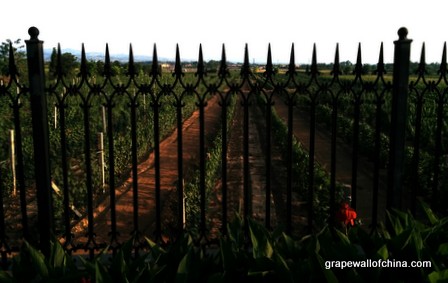
By Jim Boyce | A core belief of China wine watchers is that imports hold a minority share of the market. That share is usually pegged at about 30 percent. But, as I argued 10 months ago, there is reason to believe it is actually over 50 percent. This is now even more likely given that local wine production dropped and imports soared in 2017. I edited my post to reflect this:
The view that imports have a third of the market snugly fits two stats for 2016 2017: local production was pegged at 1.1 billion 1 billion liters while Customs reported about 480 million liters 570 million liters of incoming bottled wine. Those stats give imports just over 30 36 percent of the market and some people are confident that share will eventually pass 50 percent.
But is it possible imports already have more than half of the market? Let’s consider a few factors.
First, China also imported about 145 million 180 million liters of bulk wine last year. Whether bottled as foreign wine or mixed with Chinese juice and sold under local labels, it boosts total imports to 625 million 750 million liters. Against the domestic production figure of 1.1 billion 1 billion liters, the import share rises to 36 43 percent.
Second, national production figures are complied from provincial and regional numbers. But, as noted before, the same wine might be counted multiple times. For example, consider a winery in Province A that makes and reports a million liters of wine. It then sells that wine as bulk to a winery in Province B, which uses it for blending and, in turn, reports an additional million liters of production. In other words, one million liters becomes two million liters by the time it reaches the national spreadsheet.
Third, there are other ways to gauge wine production. Industry insiders say calculating vineyard coverage versus average yield per hectare, or looking at a factor like the fermentation capacity at wineries, suggest the 1.1 billion 1 billion number doesn’t match production.
Several insiders told me they consider a reasonable figure to be 500 million liters, at most. If true, that would mean domestic production is roughly equal to trails bottled imports, and below is quite far behind total imports when we include bulk. And that would mean imports already have over half—55 percent 60 percent or more—of the China wine market. It would also mean that the consumer sector is much smaller than is commonly assumed.
This isn’t to suggest this situation is shocking. In the above example, Province A and Province B did each add a million liters of wine and reported it. Who can blame them given the stress in China on achieving growth?
The point is that a second stat, one that considers factors such as wine grape vineyard coverage, tons of grapes crushed and fermentation capacity, and that takes into account how wine production is counted by regions and provinces, would be useful for those who seek deeper insights into how much wine China makes and drinks.
You can see my original post on this topic here.
Follow Grape Wall on Facebook and Twitter. Sign up for the free China wine e-newsletter below. And check out sibling sites World Baijiu Day and Beijing Boyce.
Grape Wall has no sponsors of advertisers: if you find the content and projects like World Marselan Day worthwhile, please help cover the costs via PayPal, WeChat or Alipay.
Sign up for the free Grape Wall newsletter here. Follow Grape Wall on LinkedIn, Instagram, Facebook and Twitter. And contact Grape Wall via grapewallofchina (at) gmail.com.

Leave a Reply
You must be logged in to post a comment.